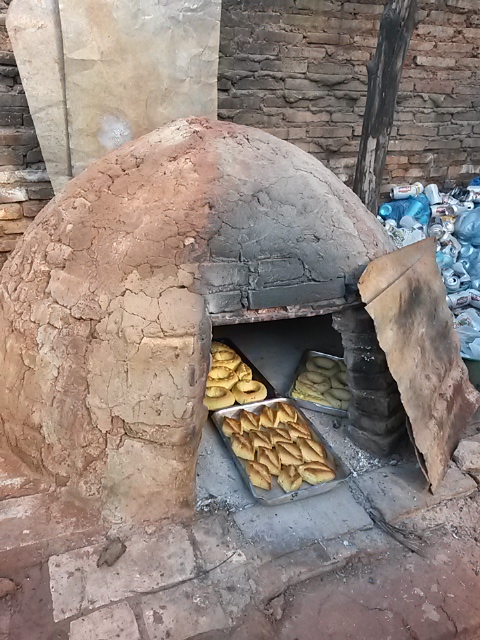Two weeks ago the farmers committee in my community asked me to give a presentation about homemade organic pesticides. The bucket next to me in the picture below is the pesticide I made. It consists of chopped garlic, hot pepper, onion, and the leaves of a native tree. The Peace Corps teaches volunteers how to make this insecticide during training.

My community contact is the head of the farmers committee, and the woman holding the poster looking away from the camera is her sister, my host mom. The farmers here are very interested in using homemade insecticides because often their squash and melon doesn’t produce at all because there are so many worms. The meeting went relatively well, but I’m going to have to learn more Guarani before I can effectively communicate with the farmers. I could only say about one fifth of what I wanted to say in Guarani, and the farmers who understood Spanish translated the rest into Guarani.
Chipa (CHEE – pah) is one of the most popular foods in Paraguay. Many people make it at home in brick ovens like the one shown in the photo above. But fresh chip is more commonly purchased on busses and on the street. I made this chipa at the house of one of the members of the farmers committee. However, I had to take so many liberties with the recipe that I’m not sure how much it will taste like real chipa…a lot of the ingredients used are hard to find in the U.S.
Ingredients
1/2 cup pig fat (vegetable oil can be used as a substitute)
2 eggs
1/2 cup of cheese, shredded (mozzarella cheese is the most similar to queso Paraguay, the only cheese used in rural Paraguay)
1 1/2 tsp salt
1/3 cup milk (Paraguayans substitute half of this with suero, the clear liquid that rises to the top of raw milk)
2 cups all-purpose flour (Paraguayans use almidón, flour made from yucca, but I don’t think that’s widely available in the U.S.)
1 ½ cups corn flour
½ tsp anise seed
In a large bowl, whisk together the eggs and oil, and add the cheese. Then add the flour and corn flour. Grind the anise seed in your hand and add that as well.
In a small bowl, mix together the milk and salt. Add this mixture to the flour mixture, a little at a time. Paraguayans knead the mixture for a long time, up to 20 minutes. Then they form it into long rolls, flatten it, and cut it into triangles as shown in the picture above. It can also be rolled out and formed into rings. The dough will not rise when cooked.
Paraguayans always cook chipa in a brick oven, which is very hot. I would guess that you could cook it in a conventional oven at 400 degrees F, for 10-20 minutes. The chipa is cooked when the tops are well browned.
* The contents of this website are mine personally and do not reflect any position of the U.S. government or the Peace Corps.
